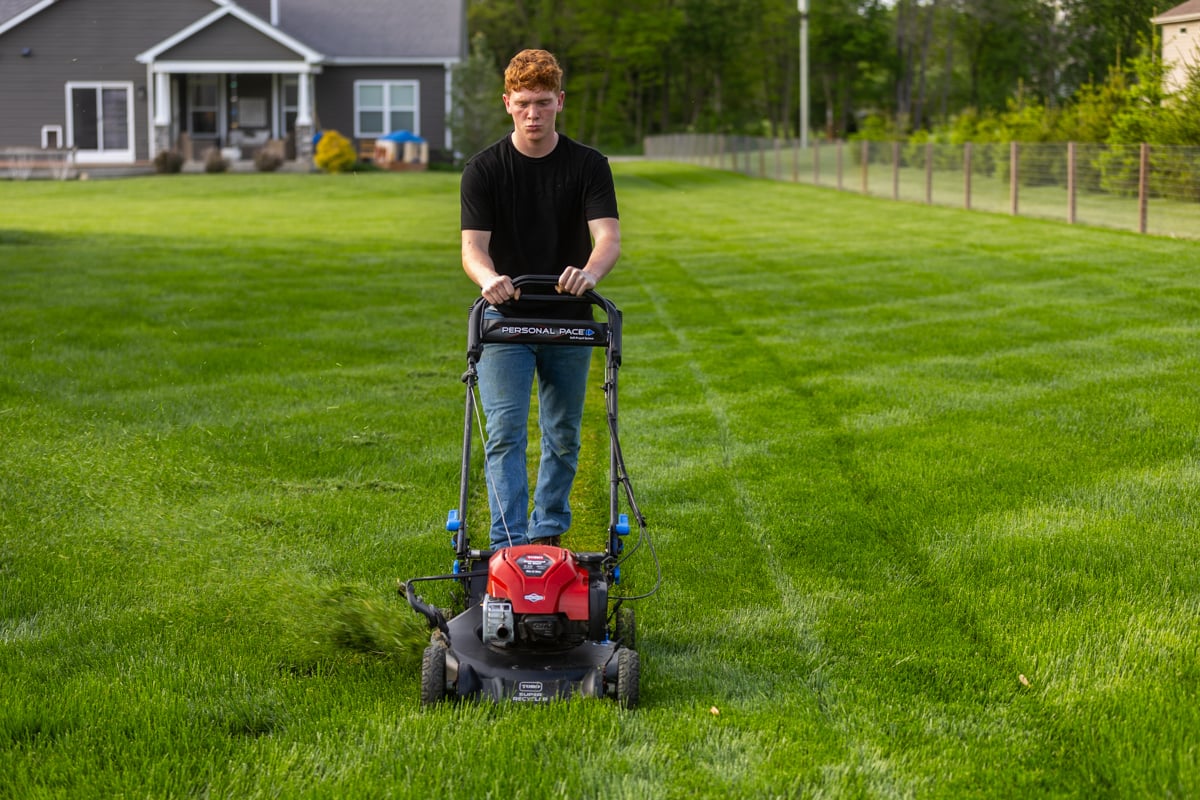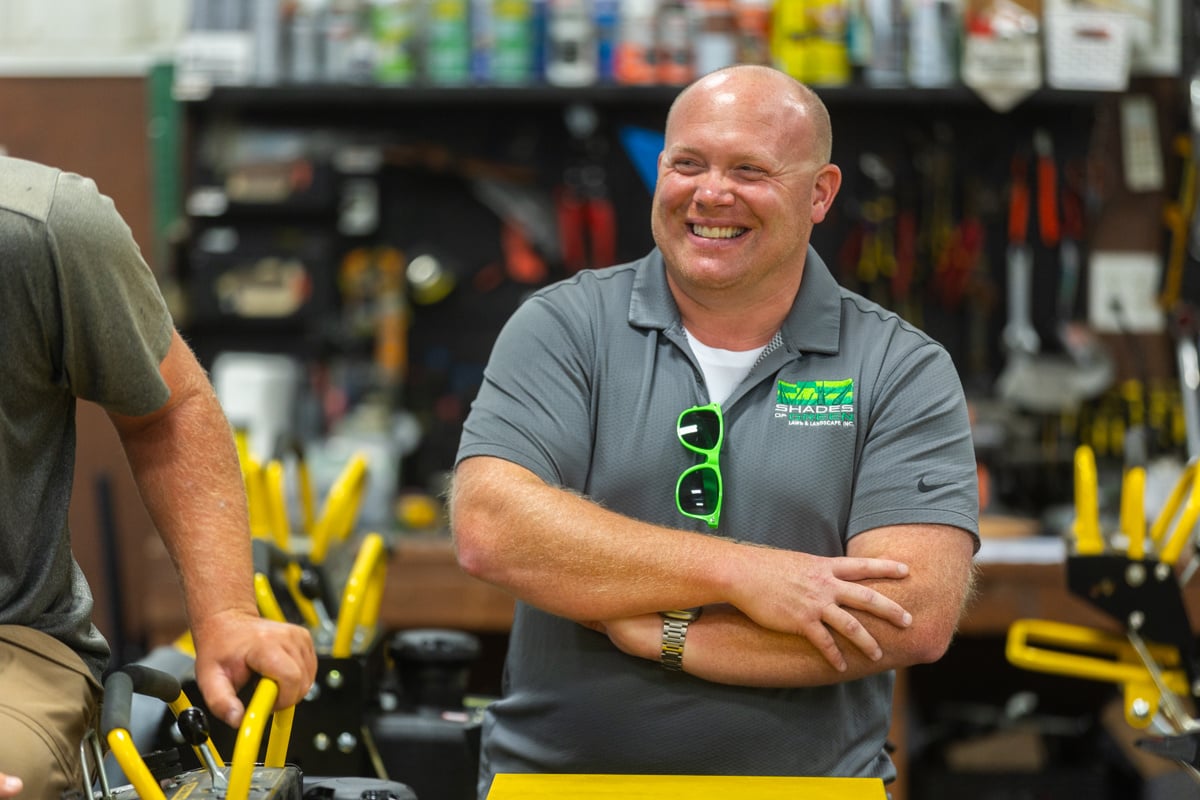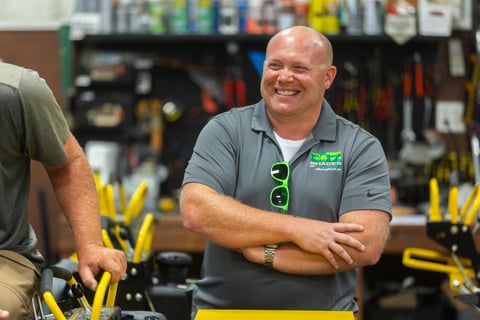
Bagging vs. Mulching Grass Clippings: Which is Better for Your Lawn?

Every time you mow, you are left with a lawn full of grass clippings, and the big question: Should I bag my grass clippings or let them stay? A lot of homeowners are not totally sure what how those little clippings actually affect their lawn. Do they help? Do they hurt? Or do they just make a mess?
Well, the short answer is that most of the time, mulching your grass clippings is better for your lawn. But like anything, there are a few situations where bagging might make sense, too.
Let’s break it all down so you know exactly what to do next time you fire up your lawn mower.
What Does Mulching Grass Mean?
The term ‘mulching’ is used a few different ways in the landscape world, so when we say “mulching grass”, we are not talking about dumping a pile of wood chips all over your lawn. Mulching your grass is actually about what happens when you mow.
Most modern lawn mowers have a mulching mode or sometimes even a special mulching blade. If you have a simpler or older model, it just means taking off the bag that gathers the clippings, switching out your blade, and letting them fall back into the lawn and dirt. As the mower moves along, it cuts just a little bit at the very top of your grass blades.
These tiny clippings break down quickly, returning nutrients to your soil, helping your grass stay healthy, and saving you from having to haul heavy bags of grass to the curb.
Benefits of Mulching Grass
When you bag your clippings, you are not just removing the little green bits; you are hauling away a pretty valuable source of nutrients your lawn could be using. Mulching grass clippings won’t be enough by itself to warrant ditching ongoing lawn care, but it can still make a difference in the overall health of your lawn.
Think of it like this: imagine if someone went into a forest every year and raked up and bagged all the fallen leaves. Over time, the soil would start to decline, and it would get weaker, lose nutrients, and struggle to support a healthy ecosystem. Why? Because those leaves naturally break down and recycle important nutrients back into the soil. The same basic principle applies to your lawn.
Grass clippings as mulch also give your soil life. Microbes and other beneficial organisms in your soil feed on those clippings as they break down, which helps create healthier, more biologically active soil. When your soil is healthy, your grass grows better.
Now, let’s tackle one of the biggest myths out there: Won’t mulching grass cause thatch? Nope. Totally not true. Thatch is made up of tough living and dead plant material, including roots, stems, and rhizomes that establish themselves between the soil and grass. As long as you are mowing properly, cutting just the top third of the grass blade at a time with sharp mower blades, mulched clippings break down super quickly and won’t build up into thatch.
And let’s not forget a few other perks:
Less Work For You
No more stopping to empty the mower bag every ten minutes and hauling heavy grass clipping bags around.
Less Yard Waste
No huge piles of grass waiting for trash day.
Better Moisture Retention
A thin layer of mulched clippings can help your lawn hold onto moisture on hot, sunny days.
Money Savings
With fewer nutrients being removed, you don’t have to replace that lost one pound of nitrogen year after year.
Are Grass Clippings Good For Your Lawn? Some Disadvantages of Mulching Grass
For the most part, mulching grass clippings is a win for your lawn, but there are a few exceptions where bagging might make more sense. So, when should I bag my grass clippings?
When Your Lawn has Gotten a Little Wild
Sometimes life happens, and mowing the lawn gets bumped down your to-do list. If your grass has gotten super long, those clippings will be thick, heavy, and way too much for your lawn to handle all at once. Instead of breaking down quickly, big clumps of clippings can smother your grass, block sunlight, and create a soggy mess that no one wants to deal with. In those cases, it is better to bag it and give your lawn a fresh start.
When You Don’t Have Time for Clippings Everywhere
If you have a lot of flower beds, sidewalks, driveways, or patios, mulching can be a little bit messy. Some mowers have a habit of shooting clippings into your landscaping or leaving green confetti all over your driveway. If you don’t have time to blow it off afterward, bagging may be an easier option every now and then.
When Dealing With Weeds or Disease
If your lawn has a lot of weeds going to seed or if you are dealing with a lawn disease, mulching might accidentally spread those problems around. Bagging in these situations can help you contain the issue and keep things from spreading further.
How to Mulch Grass
Most newer mowers either come with a mulching setting or can be easily outfitted with a mulching blade. These blades are designed to chop clippings into tiny pieces that break down faster. Remember to only cut off the top third of the grass blade each time you mow. This keeps the clippings small, light, and easy for your lawn to absorb. Make sure to also mow when it is dry. Wet grass turns into heavy, sticky clumps that don’t mulch very well. Finally, keep your mower blade sharp, as a dull blade tears grass instead of cutting it cleanly.
Partnering with Shades of Green for Lawn Care in Lafayette, Carmel, Noblesville, Westfield, and Nearby Areas in Indiana
Mulching clippings is one of the simplest ways to give your lawn a little extra love. It keeps nutrients where they belong, helps your soil stay healthy, and saves you some extra work hauling bags to the curb. Of course, every lawn is a little different, and sometimes you just need a hand figuring out what is best for yours.
At Shades of Green, we are always here and happy to help, whether it is offering some expert advice or some help getting your lawn looking its best. We have found that combining the best practices for lawn mowing and general care with year round lawn care is the best formula for successful grass.
Ready to have the best-looking lawn on the block? Get started by filling out our contact form today!
About Cory Overman

Cory is the heart and soul of Shades of Green. His dedication to doing right for our customers has been the driving force behind the company's success. With a degree in Turf Science from Purdue University, Cory continually strives to craft the best treatment plans using the latest technologies and innovative products, ensuring top-notch results for every client.
